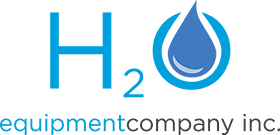The EPA recently released information about a growing health concern in our drinking water called PFAS. PFAS stands for “Per and Polyflouroalkyl Substances. Learn more about these man-made chemicals, how you can become exposed, health risks, and how to remove PFAS from your well water.
What are PFAS?
PFOA – Perfluorooctanoic Acid
PFOS – Perfluorooctane Sulfonate (or Perfluorooctane sulfonic acid)
PFAS – a “Catch-All” name that includes PFOA and PFOS
How am I Exposed to PFAS?
PFAS, or “Per and Polyflouroalkyl Substances,” are everywhere, in the soil, the products we use and even the food we eat. They have even been found in drinking water supplies. The EPA estimates that almost all the people in the US have been exposed to PFAS.
Food:
- Chemicals can be absorbed by crops through contaminated soil and/or water
- Packaging containing PFAS can contaminate food
- Industry tools contaminated with PFAS can pass them onto food during production
- Consumption of meat products where animals were exposed to PFAS
Water:
- Runoff from facilities utilizing PFAs
- Runoff from firefighting foam
Products:
- Huge number of different products today contain PFAS!
- Consumer Packaging
- Flame-Retardant coatings
- Nonstick coatings
- Waterproof Coatings
- Stain Repellent Coatings
- Cleaners
- Waxes, Paints and Polishes
Industry:
- Facilities using or creating products containing PFAS
- Large scale fire containment (such as Airports)
What are the Health Risks?
Studies done in laboratory animals have shown that once absorbed, these chemicals can linger in the body for very long periods of time. They have been linked to a variety of health issues, including:
- Low Infant Birth Weights
- Immune System Problems
- Thyroid Hormone Product
- Cancer
How are PFAS Removed From Drinking Water?
Recently in Connecticut, the potential health risks of PFAS were brought to light when large amounts of Firefighting Foam made their way into the Farmington River after it was used to put out an aircraft fire at Bradley Airport. This raised concern about how local wells could be impacted with the runoff of the foam containing these chemicals. The EPA lists several way approved to remove specific PFAS from drinking water.
Granular Activated Carbon (GAC)
- GAC was found to be very effective at removing PFAS from drinking water
- GAC tanks are easy to install and require no backwashing
- Require yearly media replacement*
- Also effective at removing Radon and some odors
Anion Resin
- Similar to a water softener in form and function
- Requires regeneration and discharges wastewater
- Requires a brine tank and salt maintenance
- May require other equipment for pre-treatment of water in order to be effective
- Requires specific Anion Resin for perchlorate removal
Reverse Osmosis
- Found to be very effective at removing PFAS from drinking water
- Point of use system (usually kitchen sink)
- Easy to install
- Requires yearly filter changes*
How Do I Keep Myself Safe?
The first step is to have your water tested for PFAS to see if you are at risk. The results will help determine which system would be best for you and your family. Call H2O at 860-267-0110 to learn about water testing options for PFAS.
More Information About PFAS:
- Many PFAS were voluntarily phased out of production by some of the largest Industry offenders by 2015
- https://www.epa.gov/assessing-and-managing-chemicals-under-tsca/risk-management-and-polyfluoroalkyl-substances-pfass#tab-3
- In 2016 the EPA placed a cap of 70 parts per trillion of PFAS allowed in drinking water supplies
- https://www.epa.gov/ground-water-and-drinking-water/drinking-water-health-advisories-pfoa-and-pfos
- In 2019 the EPA released an Action Plan to address PFAS and protect public health
- https://www.epa.gov/pfas/epas-pfas-action-plan
- Installation of certain types of water treatment equipment can remove PFAS from your drinking water
For more information, visit the EPA’s Website:
